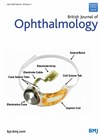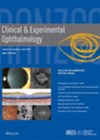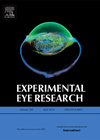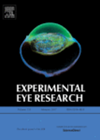
Journal Reviews
Silicone oil in rhegmatogenous retinal detachment
Silicone oil (SO), used in complicated retinal detachments, is associated with complications such as cataract, increased intraocular pressure (IOP), keratopathy, cystoid macular oedema (CMO), epiretinal membrane (ERM) and loss of vision. Emulsification of oil can also lead to migration of...
Anatomical and functional outcomes following switching from aflibercept to ranibizumab in NARMD
This is a six-month, prospective, single-arm study in the UK and Germany. A total of 100 patients were enrolled (one in the primary failure group, 99 in the suboptimal treatment response group), treated three-monthly intravitreal ranibizumab injections (0.5mg), and then...
Retinoschisis
In this retrospective study the authors evaluate the effect of pars plana vitrectomy (PPV) and internal limiting membrane (ILM) peeling for lamellar macular hole (LMH) with or without macular retinoschisis in highly myopic eyes. Twenty-one highly myopic patients (22 eyes)...
Cystoid macular oedema following cataract surgery
This review covers the history, incidence, diagnosis, risk factors, pathophysiology and medical management of postoperative macular oedema (PCMO), with a particular emphasis on key contemporary studies and novel observations. The authors revisit the incidence of well-established risk factors including intraoperative...
RPE atrophy onset in treated nAMD
In this study the authors aim to evaluate the role of various factors for the development of retinal pigment epithelium (RPE) atrophy over a period of five years in patients with nAMD. Fifty-two newly diagnosed nAMD patients with complete absence...
Glaucoma and capillary perfusion
Elevated IOP is important but not the sole factor responsible for retinal ganglion cell (RGC) death and optic nerve damage in glaucoma. There is increasing evidence that visual loss correlates with macular inner retinal thinning. A total of 148 eyes...
PRN Ranibizumab verses continuous aflibercept in UK clinical practice
This was a multicentre (21 UK hospitals), national EMR study on treatment naïve nAMD eyes, undergoing predominantly as needed (PRN) Ranibizumab or continuous (fixed or treat and extend - (F/TE)) Aflibercept (Af). The primary outcome was change in vision at...
CD40L activation of human RPE cells
Age-related macular degeneration (AMD) is the leading cause of reduced visual acuity in the elderly worldwide. The risk factors involved in AMD include smoking and diet, while genetics have been shown to have a significant role. Recently a link between...
Management of diabetic macular oedema (DMO)
The authors present guidelines on current diagnostic and therapeutic procedures in the management of DMO. Fluorescein angiography (FA) and optical coherence tomography (OCT) are recommended before starting treatment to help diagnose and stage DMO, and can be repeated if there...
Steroid implants in the treatment of post-epiretinal membrane peel macular oedema
This is a retrospective review of 39 eyes of 37 patients treated with Ozurdex® (intravitreal dexamethasone implant) for persistent post-operative cystoid macular oedema (CMO) following vitrectomy and idiopathic epiretinal membrane (ERM) peeling. The 0.7mg implant was injected in each eye...
Importing iron to the retina
In the retina, iron is particularly critical for the visual phototransduction cascade. In the retinal pigment epithelium (RPE), RPE65 activity leads to 11-cis-retinaldehyde, the photosensitive component of rhodopsin production and iron containing enzymes are necessary for disc replacement in photoreceptor...
High dose (2.5mg) bevacizumab for postradiation cystoid macular oedema
The authors present a retrospective, interventional case series investigating the efficacy of high dose (2.5mg/0.1ml) intravitreal bevacizumab in the treatment of persistent postradiation (Iodine-125 plaque brachytherapy for uveal melanoma) cystoid macular oedema (CME). Persistent CME was defined as increased or...













